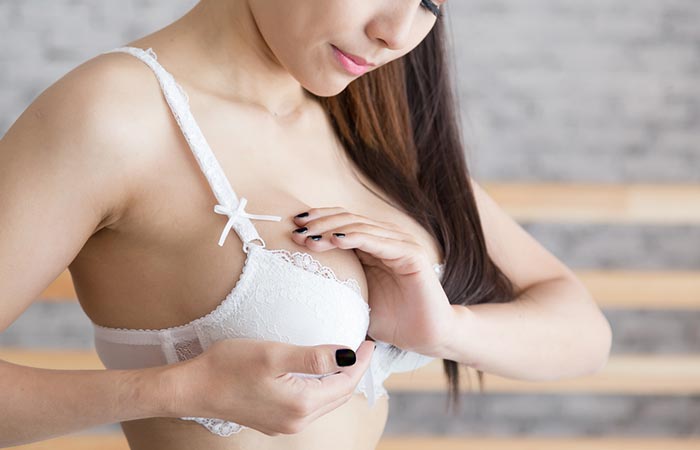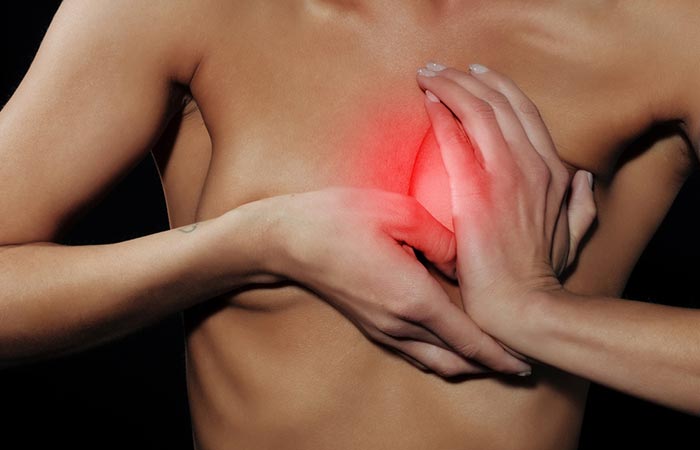Breast pain, aka ‘mastalgia’, accounts for nearly half of all breast-related complaints. However, before you start jumping to dire conclusions (breast cancer!), please read this.
If you’re suffering from pain, tenderness or increased sensitivity to touch or pressure in one or both of your breasts, we can understand that you’re probably terrified and imagining the worst.
Ergo, let’s get a few facts straight first. Breast pain alone isn’t usually an indicator of breast cancer; and, according to experts, it is much more likely that tender, aching breasts could be caused by something else.
The following are 5 very likely reasons why you’re experiencing pain, or even increased sensitivity, in your breasts:
1. Mastitis
Mastitis is an infection of breast tissue that leads to the inflammation, i.e., abnormal swelling and redness of breasts.
In most cases, it is as a result of an infection of a woman’s breast ducts and occurs in mother’s who are nursing. While breastfeeding, bacteria residing inside the baby’s mouth could gain entry into a woman’s breasts through her nipple (1).
Other than breast pain, mastitis could also lead to symptoms such as:
- General discomfort in breasts.
- Fever of 38.3 C (101 F) or higher temperatures.
- Chills, fatigue or malaise.
- Warm or red breast skin.
- Nipple discharge or pus is also common (2).
If left untreated, mastitis could lead to the formation of an abscess. Once diagnosed, your doctor may prescribe antibiotics (for the infection) and NSAID (for the pain, swelling, and fever) (3).
2. Fibromas
Finding a lump in your breast can be terrifying. However, not all tumors and lumps happen to be cancerous. One such benign (read: noncancerous) tumor is called a fibroma (4). It is most commonly discovered in women below the age of 30.
Fibromas are very small but feel distinctly different from surrounding breast tissue. Their boundaries are clearly defined and they can be moved under the skin. They feel almost like small marbles and could possess a rubbery feel (5).
While the exact cause of fibromas isn’t fully known yet, the hormone ‘estrogen’ has been thought to play a role in the genesis and development of these benign tumors. Additionally, the use of oral contraceptives in women below 20 years of age has also been linked to a higher risk of the development of fibromas (6).
These benign tumors could grow, especially if you’re pregnant. Once they hit menopause, women often report fibromas as shrinking. It is entirely possible for fibromas to resolve spontaneously by themselves. Occasionally, however, if they’re on the larger scale, they may require surgical excision.
3. Cysts
A cyst in one’s breast may feel like a lump, but it could actually be a small and usually harmless sac residing in your breast tissue, which is actually filled with fluid rather than cancerous or noncancerous cells (7).
They can be found in one or both breasts and can also present with signs and symptoms such as:
- Breast tenderness or pain in the region of the breast cyst.
- Nipple discharge that could be clear, straw colored or even dark brown.
- A lump that is smooth and easily moveable with distinct boundaries or edges (signifying a benign nature).
- Changes in breast tenderness and size of the lump with your menstrual cycle (8).
Simple breast cysts that are fluid-filled are usually confirmed on ultrasound and rarely require any treatment. If your symptoms are severe, your doctor may prescribe birth control or hormonal therapy. Surgery is recommended in rare cases.


